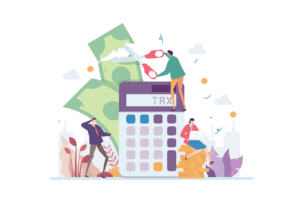
It’s the best model to use when inaction is more costly than not making the best decision. For example, suppose your company has encountered an issue causing extended downtime. In that case, you may want to use the bounded rationality decision-making model to quickly identify the first acceptable solution since every minute wasted is costly.
A perfect storm erupted when different business units’ decisions simultaneously increased the demand for cash while reducing its supply. All participants felt they had a right (and the need) to express an opinion on everything, even where they had little knowledge or expertise. The purpose of the meetings morphed into information sharing and unstructured debate, which stymied productive action (Exhibit 4).
The Journey from Project-Centric to Product-Centric
Far more frequent than big-bet decisions are cross-cutting ones—think pricing, sales, and operations planning processes or new-product launches—that demand input from a wide range of constituents. Collaborative efforts such as these are not actually single-point decisions, but instead comprise decision making framework a series of decisions made over time by different groups as part of an end-to-end process. This is why the common advice to focus on “who has the decision” (or, “the D”) isn’t the right starting point; you should worry more about where the key points of collaboration and coordination are.

Let’s apply the framework recursively and define the Benefits, Risks, and Issues of each Solution variation the same way we did for the Subject. Now, it seems that the car is the best option because the Traveler won’t need to rent a car in LA. However, we wanted to make this example look like a real-life situation and imagined that the Traveler’s friend already has a car.
Cynefin Framework
If the decision needs to be taken is at work, then the organizational structure should be considered. This question assumes significance as the amount of risk a person is willing to take depends on their share of responsibility. These are all the possible choices that you have, and you can start eliminating the wrong choices from here.
- The SWOT (Strengths, Weaknesses, Opportunities, and Threats) Analysis is a strategic planning framework used to evaluate the internal and external factors affecting a decision.
- Consider the depth and breadth of your leaders, their success record for driving change, and whether you have the management systems in place to be able to drive accountability for progress while ensuring agility.
- You need to empower your team members to make decisions while still giving them the guidance and authority they need to do so correctly.
- Graphs are the single most interesting decision tool for people dealing with highly volatile and complex data.
- The second most important thing is to propose reparations to the impacted customers, and in no particular order, it would be interesting to find the root cause of the bug and eventually prevent it from happening again.
Relying on a framework for every single decision is overkill; they should be reserved for important decisions that impact a large swath of the organization. Overreliance can destroy everyone’s sense of autonomy and create its own share of bottlenecks. Decisions are important, but everyone has other things they need to do, too. With a scalable model for decision-making, team members will spend less time deliberating and more time executing without sacrificing strategic thinking.
Paired Comparison Analysis
The model presumes perfect information availability, allowing decision-makers to evaluate options methodically to select the optimum solution. Building on that idea, some believe DACI fails to address the real problem. Alternatively, product managers should create an environment of psychological safety where people can be open about their opinions and disagreements. Hold any necessary debates and establish a decision-maker as the tie-breaker. The informed are the people who need to know about the project or decision but don’t have direct authority over it.
0 commenti